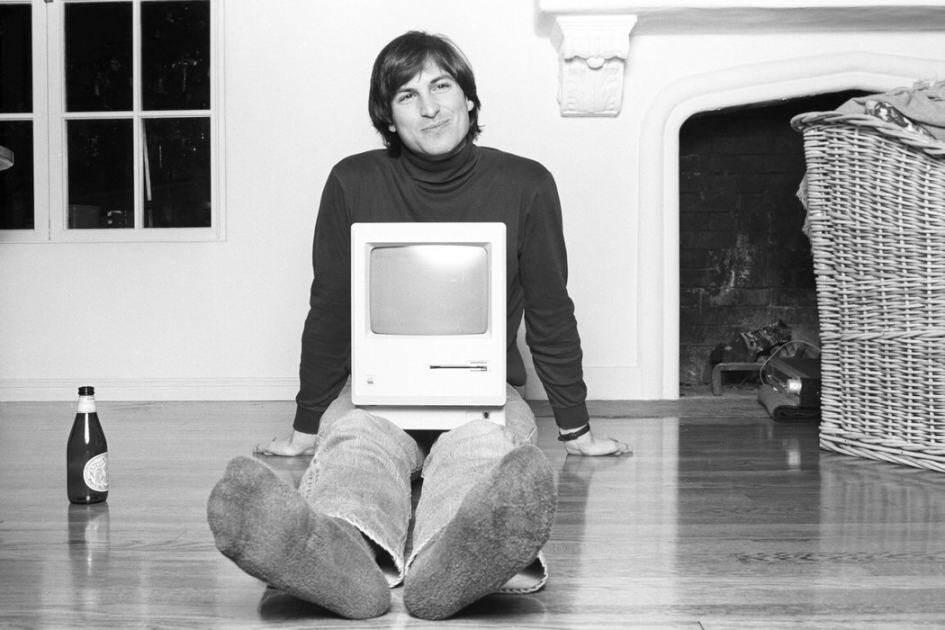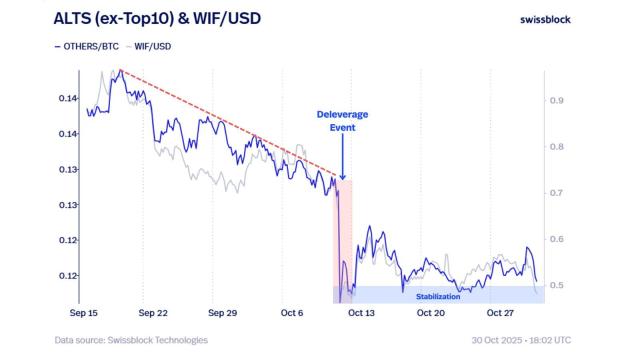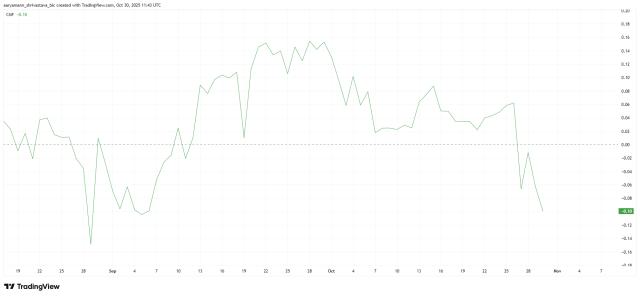Original author: Zhou Zhou, Foresight News
For Crypto, there is only one path forward—to no longer remain outside the mainstream, but to become part of the mainstream world itself.
On October 29th, when Nvidia's market capitalization surpassed $5 trillion, becoming the world's first publicly traded company to achieve this milestone, crypto professionals collectively "broke down." This wasn't just because Nvidia's market capitalization alone exceeded the total market capitalization of cryptocurrencies ($4 trillion). It was also because Nvidia and the AI sector it represents are striving to expand the boundaries of the world and seek incremental growth, while cryptocurrencies are often perceived as constantly trapped in zero-sum games. Many have not only failed to gain wealth but have also lost their future.
The daily buzz among AI industry professionals revolves around self-driving cars, robots, life sciences, and space exploration—how AI is profoundly changing and reshaping the value of these industries. However, as one crypto KOL put it, the daily topics of discussion among crypto professionals are: cats, dogs, frogs, Chinese memes, who got listed on Binance Alpha, which celebrity liked and retweeted… After the initial excitement, only chaos remains.
The repeated failures of Altcoin and meme waves may gradually help crypto professionals recognize the right direction. Only by combining technology with the real world can crypto have a more sustainable and long-term future. Let crypto become a vehicle for technology, not a playground for gamblers.
A more realistic problem is this: when the market capitalization of USD stablecoins reaches $250 billion (the circulating supply of USD is approximately $2.5 trillion), the market capitalization of Bitcoin exceeds $2.2 trillion (the market capitalization of gold is $27 trillion), and Binance's daily trading volume for spot and futures contracts reaches $100 billion (Nasdaq's daily trading volume is approximately $500 billion), Crypto has no way forward but to become mainstream.
First: Use blockchain technology to completely replace the global financial system.
Stablecoins are gradually replacing the original operating system of fiat currencies; cryptocurrency exchanges are taking market share from traditional stock exchanges such as Nasdaq; Bitcoin is becoming a new global value anchor after gold; public blockchains such as Ethereum are attempting to replace SWIFT and build a new international value circulation network... From the currency market, securities market, gold market, international trade market, to the payment system, cryptocurrencies are reshaping the entire financial world.
Meanwhile, the crypto industry itself is constantly evolving.
Stablecoins are evolving into "decentralized stablecoins," with decentralized stablecoins like Ethena following USDT and USDC; cryptocurrency exchanges are developing towards "decentralized exchanges," with decentralized crypto exchage like Uniswap, Phantom, and Hyperliquid emerging after the booming development of centralized crypto exchage exchanges like Binance and Coinbase; Bitcoin's market capitalization is approaching one-tenth of that of gold; and more and more countries are viewing Ethereum as a new international trade settlement network.
Every evolution in every field here represents how technology changes and restructures the real world.
The internet once revolutionized the global financial system. Blockchain is now driving a second, and this time it's an even more systemic restructuring.
Cryptocurrencies have gradually moved beyond the fringes of the financial system, integrating into and even potentially surpassing the mainstream financial system. Their groundbreaking progress in multiple areas has already captured one-tenth of the mainstream financial system's share.
For example, stablecoins account for exactly one-tenth of the circulating US dollars, with a market capitalization of approximately $240 billion and $2.4 trillion; Bitcoin's market capitalization accounts for exactly one-tenth of the market capitalization of gold, with $2.2 trillion and $27 trillion; Binance's daily trading volume accounts for approximately one-tenth of Nasdaq's daily trading volume, with daily spot trading volume of approximately $30 billion and spot and futures trading volume of approximately $100 billion, while Nasdaq's daily trading volume is approximately $500 billion.
Second: Like the early Nasdaq, it gradually became a platform for fringe technology companies.
Early Nasdaq, like today's Binance and other cryptocurrency exchanges, was a platform where "junk stocks" were most prevalent.
Initially, Nasdaq was not a mainstream exchange for trading blue-chip stocks like the NYSE. It primarily focused on small and mid-cap stocks, technology stocks, and stocks of unlisted companies, offering transparent pricing and electronic matching. At the time, the NYSE, as the mainstream exchange, still relied on manual outcry and a trading floor system.
The early Nasdaq was not as prestigious as it is today. Between 1970 and 1980, the Nasdaq market was rife with scams, almost like the "pink sheets" market depicted in "The Wolf of Wall Street," filled with junk stocks and manipulated penny stocks.
Leonardo DiCaprio's character, Jordan Belfort, is a fund sales manager during that chaotic period, adept at selling junk stocks. He picks stocks from the pink sheets that nobody's heard of, such as the one mentioned in the film: "Aerotyne International"—which was actually a non-existent airline. Jordan Belfort's original words were:
"Sir, I have a company here that's developing revolutionary aerospace technology. Boeing has investors on their list, and NASA is also paying attention. You wouldn't want to miss out on such an opportunity, would you?"
A large number of Nasdaq investors are buying these pink sheet stocks, much like media and KOLs are doing in the crypto market right now.
"Sir, this is the revolutionary x402 protocol token. Companies paying attention to this protocol include Google, Visa, and Coinbase is also actively involved. You wouldn't want to miss such an opportunity, would you?"

However, many of these tokens are actually backed by companies that don't actually exist.
It wasn't until the tech stock boom of the late 1980s and 1990s, with the attraction of large tech companies like Microsoft, Apple, and Intel, that Nasdaq gradually became one of the mainstream exchanges and achieved its current mainstream status.
In 2004, Nasdaq's average daily trading volume became comparable to that of the New York Stock Exchange (NYSE) for the first time. From its founding in 1971, to Apple's listing on Nasdaq in 1980, it took Nasdaq a full 33 years to surpass the NYSE for the first time.
During this long process, Nasdaq also lost its way at times, but it eventually waited for the growth of Internet and high-tech companies such as Apple, Microsoft, Intel, and Nvidia, and eventually became the most mainstream stock capital trading market today.
The growth trajectory of Nasdaq may offer some insights for those in the crypto industry: focus on the unique advantages of the crypto trading market itself (fair launch, global circulation, early user airdrop holdings), just like Nasdaq's initial advantages (transparent pricing and electronic matching). Don't be afraid of the chaos in the early market, just as there were many junk stocks on Nasdaq in its early days, just as there were many junk Altcoin and memes in the early cryptocurrency market.
The future of cryptocurrencies lies with companies that can have a significant impact on humanity. Just as Nasdaq relies on Apple, Microsoft, Intel, and Nvidia, the cryptocurrency market will depend on companies and organizations like Tether, Ethereum, Polymarket, Hyperliqui, Farcaster, and Chainlink. The vast majority of Altcoin and memes will disappear into the annals of history.
Nasdaq's daily trading volume is in the hundreds of billions of dollars, while Binance, the world's largest cryptocurrency exchange, also boasts a daily trading volume of tens of billions of dollars. In terms of trading volume, it's not a pipe dream for cryptocurrency exchanges to surpass Nasdaq and become the new world's largest capital market.
What makes a trading market legendary is that it brings together the vast majority of the world's innovative technology companies. It's not just a place where capital flows, but also where the pulse of technological progress pulses; it carries the world's latest productivity and the world's greatest investment enthusiasm.
Thirdly, Crypto will eventually shed its "meme era" and enter the "iPhone era."
Binance's daily trading volume has reached one-tenth of Nasdaq's, USD stablecoins have reached one-tenth of the USD in circulation, and Bitcoin's market capitalization is approaching one-tenth of gold's market capitalization... The next step for Crypto is only one path: to become part of the mainstream world itself .
Fortunately, Nasdaq was just a minor trading market in its early days, and for the first two decades, Apple computers were products created for enthusiasts and hobbyists. At the time, no one imagined they would become the mainstream in the world today.
Apple was founded in 1980, but the wave of the internet revolution didn't truly begin until 20 years later. Similarly, Nasdaq only surpassed the NYSE for the first time in 2004 to become the world's most important capital trading market, truly integrating into the mainstream world.

Without the establishment and refinement of underlying infrastructure companies like Apple and Microsoft, internet and AI companies simply could not have sprung up in large numbers. Just like Ethereum, Tether, Solana, Binance, and Hyperliquid, their growth and refinement as underlying infrastructure designs still require time. Only when they are fully mature will the Web3 revolution truly arrive, and mass-adoption products like Amazon, Facebook, and TikTok will emerge in an explosive manner.
The internet is a vast concept, encompassing not only internet companies and internet finance companies, but also infrastructure companies such as computers and mobile phones, as well as capital markets like Nasdaq that utilize the latest technologies, ultimately impacting all physical businesses. Similarly, crypto is also a vast concept, involving not only cryptocurrency companies, but also underlying technology protocols and companies, and capital markets like Hyperliquid and Binance that utilize the latest technologies. It will also eventually lead to the large-scale emergence of new application-oriented companies and even impact a wide range of physical businesses.
Technology is the ultimate weapon for continuously improving the quality of human life. Crypto's future is destined to be deeply integrated with technology, and it may even become the carrier and synonym of the next generation of technology.







